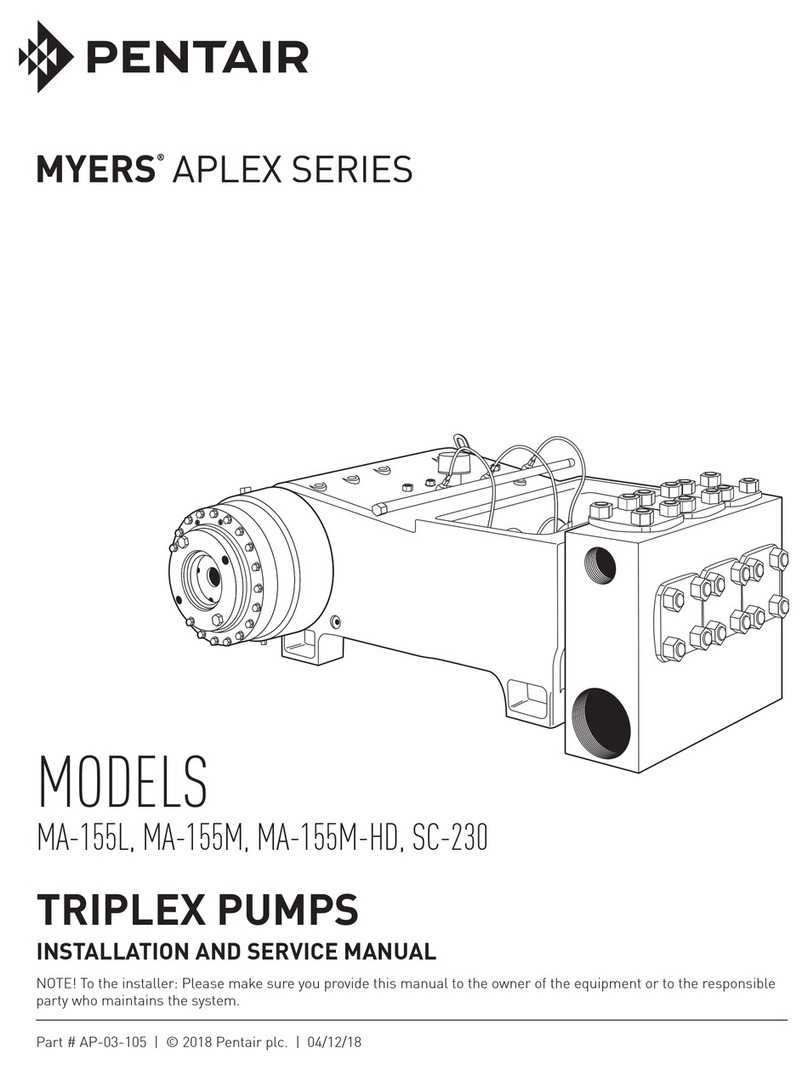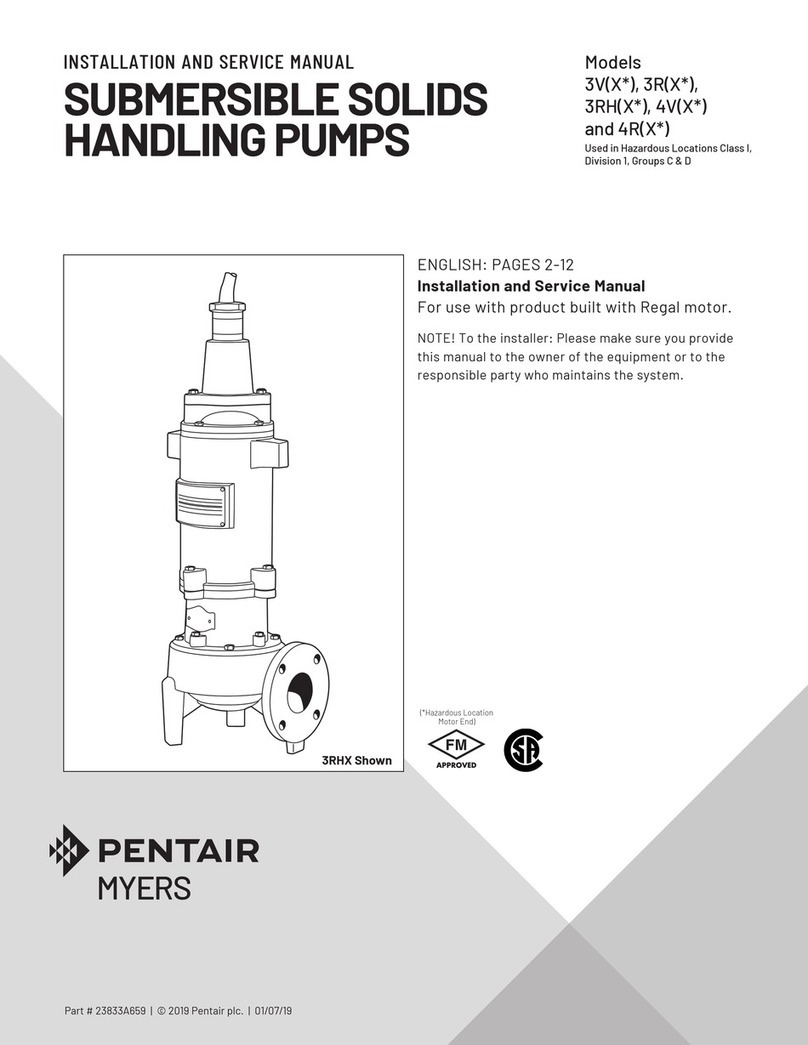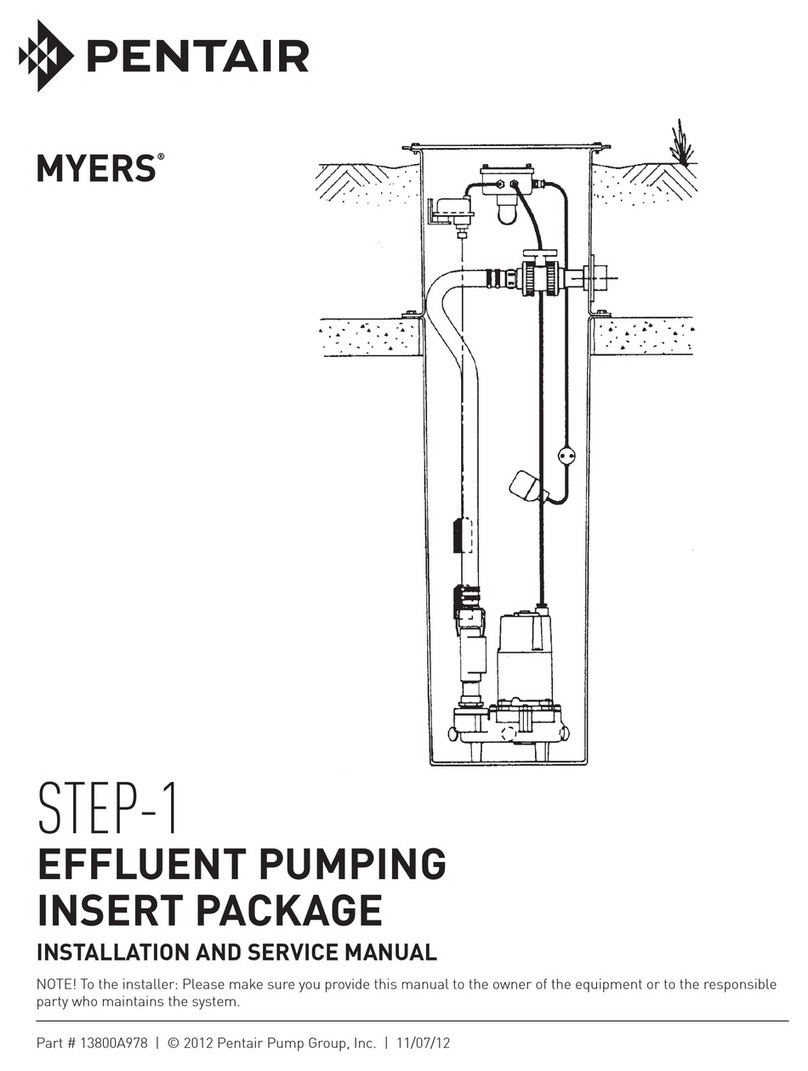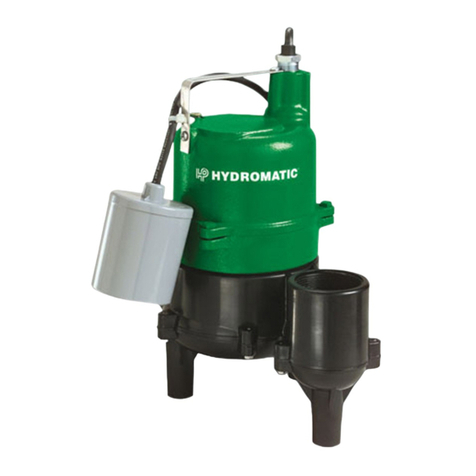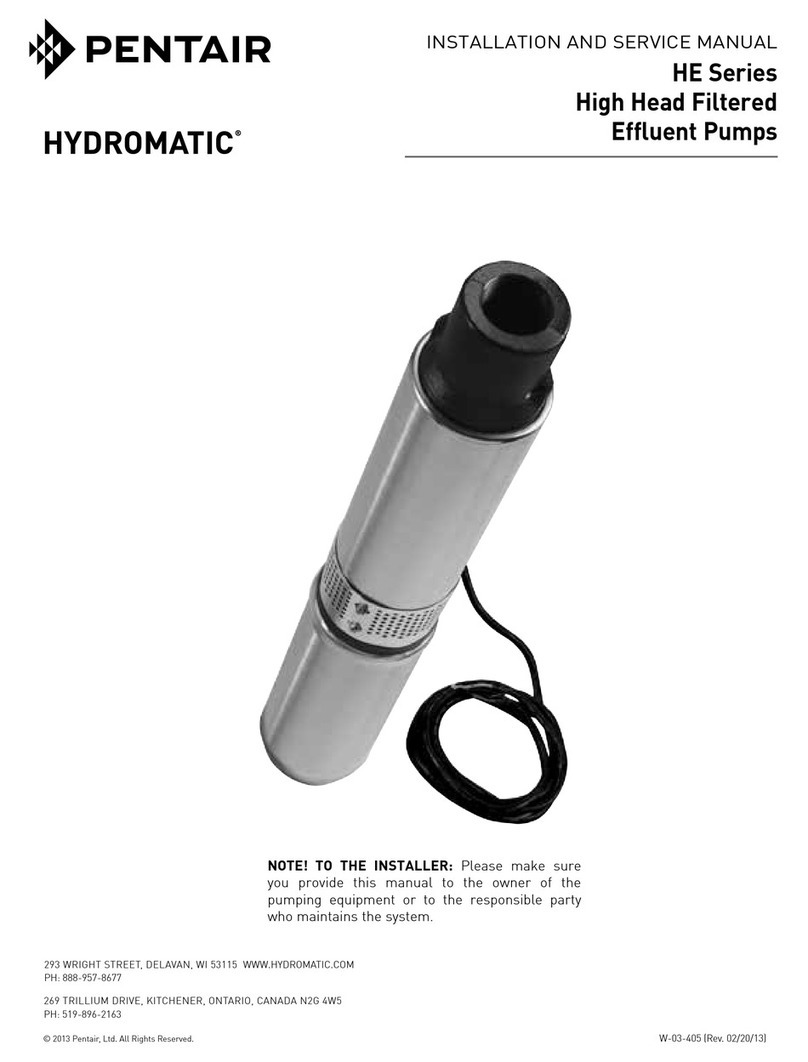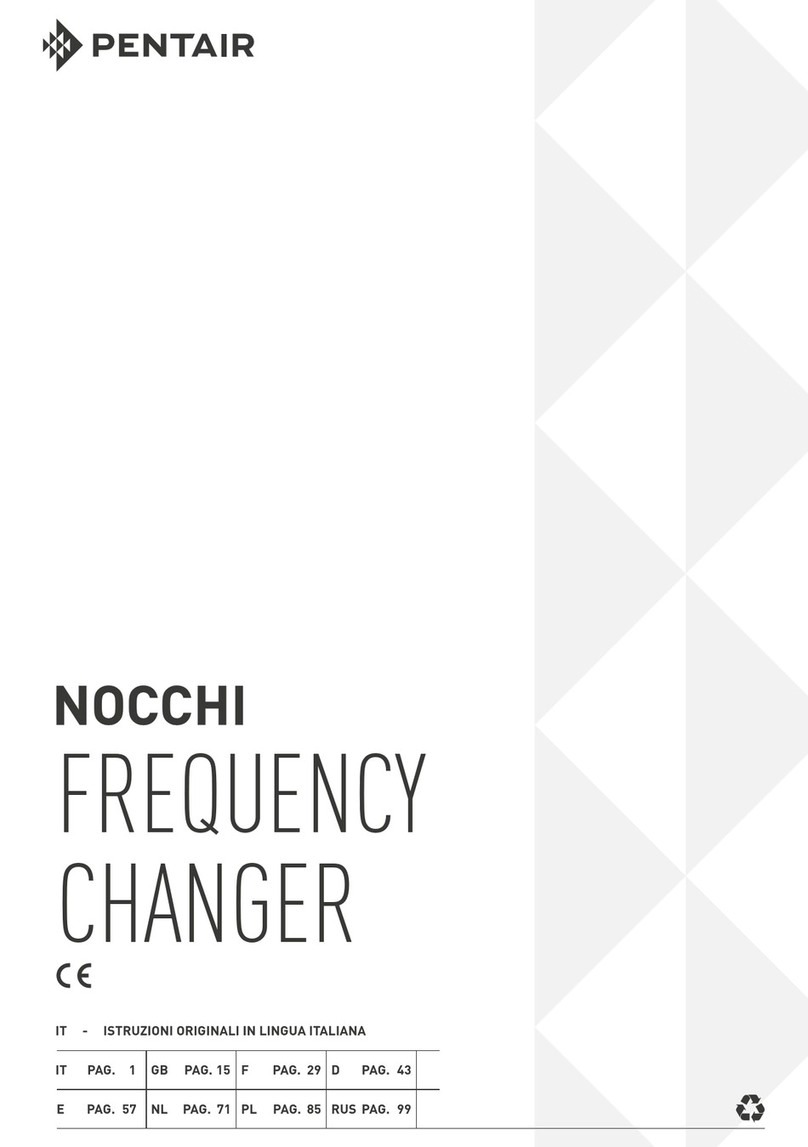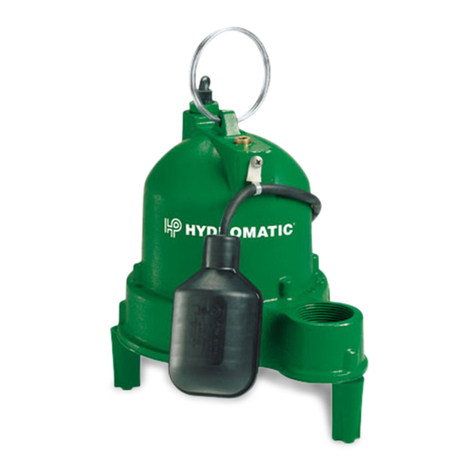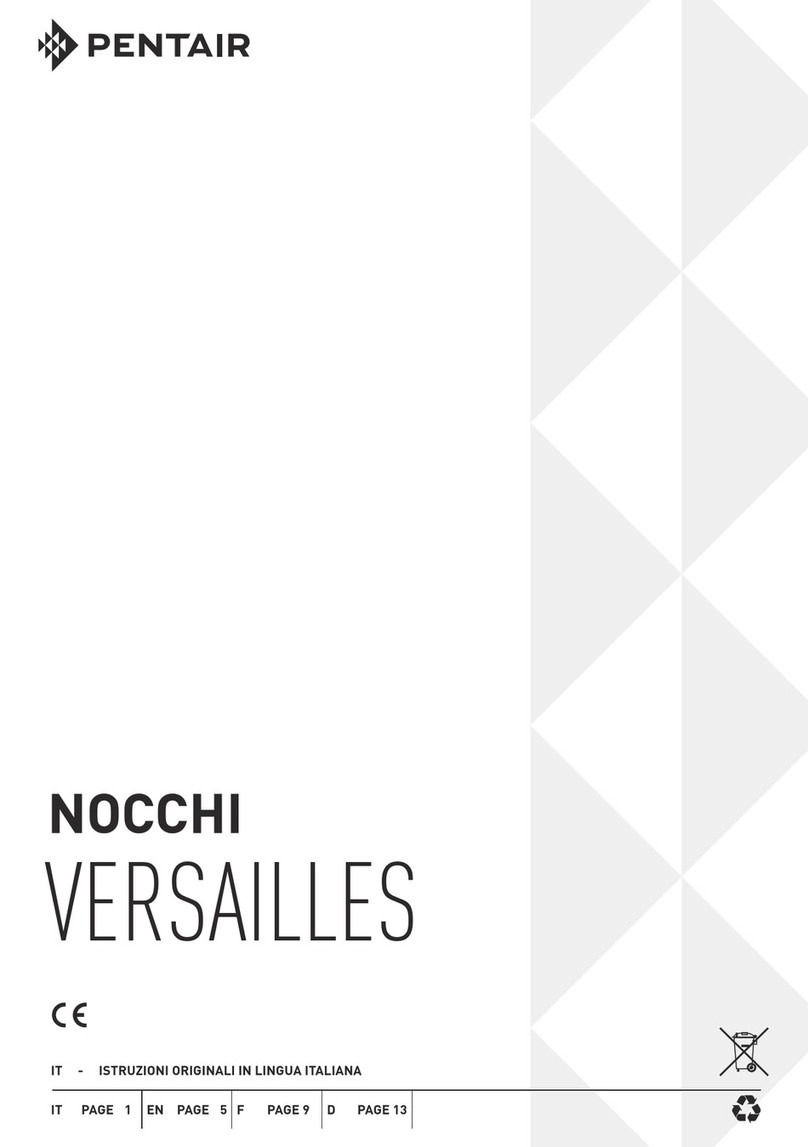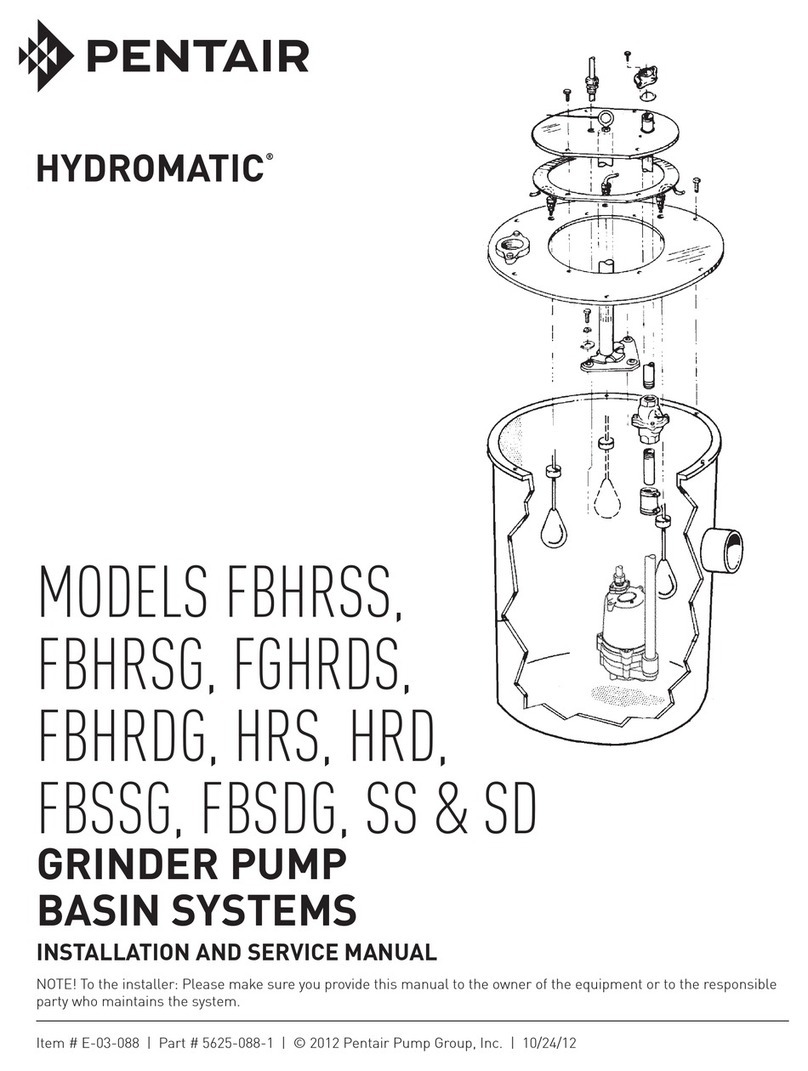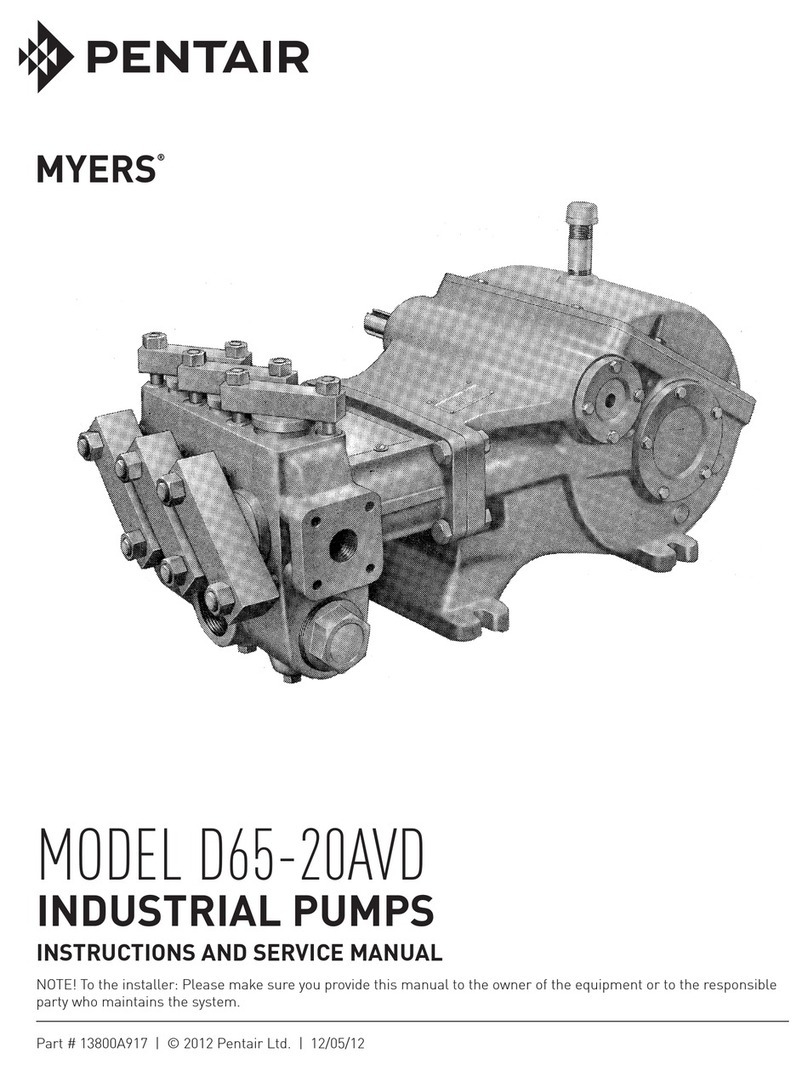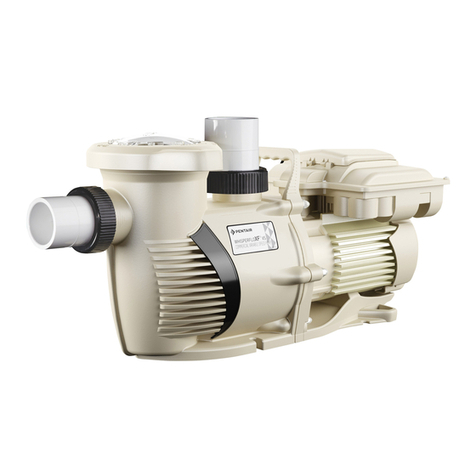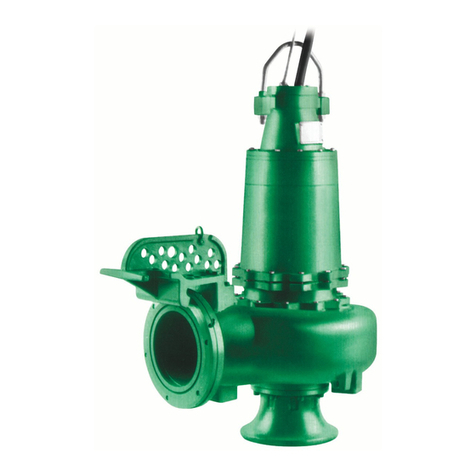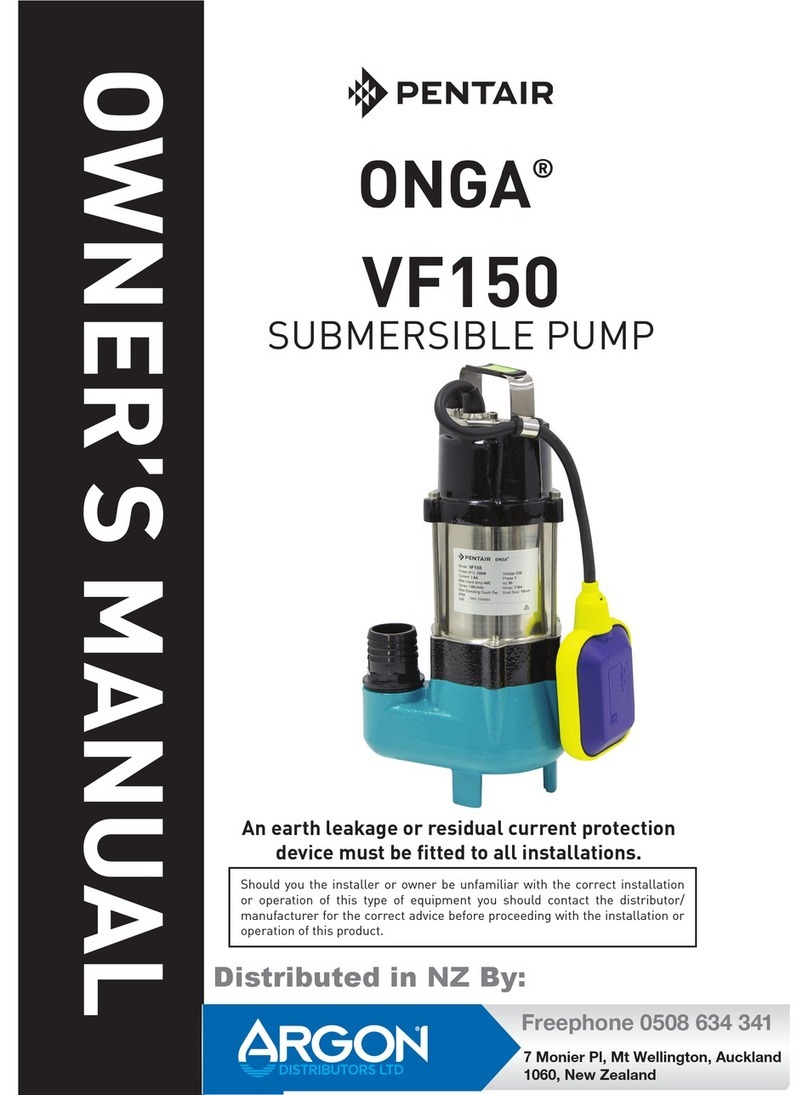
3
OPERATION
This pump is designed for intermittent
duty only. The pump operates normally
up to about 30 PSI [2.06 Bar], where a
spring-loaded by-pass valve opens, al-
lowing flow back from the output side to
the input side, providing smooth, steady
flow with minimal cycling. As a faucet is
opened back up, the pressure will drop,
the by-pass will close and full flow is
again obtained. This allows good flow,
even with today’s restrictive showers
and pullout sprayer faucets. Perfor-
mance will vary, of course, depend-
ing on the voltage to the pump; lower
voltage = lower flow, higher voltage =
higher flow. Remember your electrical
safety: It is always best to shut power to
the pump “OFF” when leaving the Boat
unattended.
SANITIZING
Potable water systems require periodic
maintenance to keep components work-
ing properly and deliver a consistent
flow of freshwater. Sanitizing is recom-
mended: prior to storing, after a period
of storage, or any time the system is
opened or contaminated, as follows:
NOTE: Check your Boat Owner’s Manual
for specific instructions. By-pass any
filters or remove filter cartridges.
1. Determine the amount of common
household bleach needed to sanitize the
tank.
A) 2 ounces of bleach per 15 gallons
tank size: 60 gallon tank [15 x 4] = 4 x
2 ounces = 8 ounces of bleach.
B) 1 ml bleach per 1 liter tank size:
300 liter tank = 300 milliliters of
bleach.
2. Mix the bleach with water in a con-
tainer such as a gallon jug. If tank is
filled through a pressurized fitting, pour
the bleach into the hose before attach-
ing the hose to the city water entry.
3. Pour the bleach solution into the tank
and fill the tank with potable water. Rock
the boat back and forth to coat top and
sides of potable water tank.
WINTERIZING
Refer to the boat owner’s manual for
specific winterizing instructions. If water
is allowed to freeze in the system, seri-
ous damage to the plumbing and pump
may occur. Failures of this type will
void the warranty. The best guarantee
against damage is to completely drain
the pump and perform the following:
1. Drain the water tank. If the tank
doesn't have a drain valve, open all fau-
cets allowing the pump to operate until
the tank is empty.
2. Open all the faucets (including the low-
est valve or drain in the plumbing), allow
the pump to purge the water from the
plumbing, and then turn the pump “OFF”.
ABOUT THE BY-PASS
NOTE: By-pass adjustment should only
be performed by a qualify technician
with proper gauges and equipment.
The bypass is a spring loaded dia-
phragm that opens up allowing water
from the discharge side back to the inlet
side. The by-pass is set to begin opening
at about 30 psi [2.06 Bar] and creating
full by-pass at about 65 psi [4.48 Bar].
The pressure switch on the pump is set
to shut off at 55 psi. If the switch or by-
pass are adjusted too much, the by-pass
and switch shut-off can overlap and THE
PUMP WILL NOT SHUT OFF. Screw-
ing the switch screw in clockwise will
raise the shut-off pressure. Unscrew-
ing the switch screw counterclockwise
will lower the pump shut-off pressure.
Screwing the by-pass screw in will
raise the pressure at which the by-pass
starts and raise the maximum by-pass
pressure. Unscrewing the by-pass screw
counterclockwise will lower the pres-
sure at which by-pass starts and lower
the by-pass pressure. WARNING: If full
by-pass is reached before the shut-off
setting, the pump will not shut off. Maxi-
mum by-pass pressure setting should
be at least 10 psi [0.68 Bar] higher than
pump shut off pressure.
3. Using a pan to catch the remain-
ing water, remove the plumbing at
the pump's inlet/outlet ports. Turn
the pump “ON”, allowing it to operate
until the water is expelled. Turn “OFF”
power to the pump once the plumbing
is emptied. Do not reconnect the pump
plumbing. Make a note at tank filler as a
reminder: "Plumbing is disconnected".
4. All faucets must be left open to guard
against any damage.
5. Potable anti-freeze may be poured
down drains and toilets to protect
p-traps and toilet seals. Sanitize the
plumbing system before putting the
plumbing system back in service.
4. Open all faucets (Hot & Cold) allow-
ing the water to run until the odor of
chlorine is detected. Allow four (4) hours
of contact time to disinfect completely.
Doubling the solution concentration al-
lows for a contact time of one (1) hour.
5. Drain the tank. Refill the tank and
flush the system once or twice until the
odor has decreased. The residual chlo-
rine odor and taste is not harmful.
MAINTENANCE
Normal pump maintenance is all that
is needed: Checking and cleaning of
the strainer, normal sanitizing and
winterizing and occasionally check-
ing all plumbing hardware and fittings
for tightness. Lack of sanitizing is the
number one reason for premature pump
failure and poor performance over time.
Lack of sanitizing will cause scale build-
up on the diaphragm and valves, causing
low flow and leak back [occasional
pump cycling with no faucets open or
tank filling up when hooked up to city
water].






